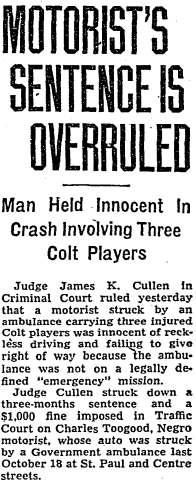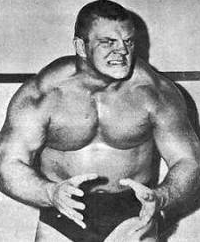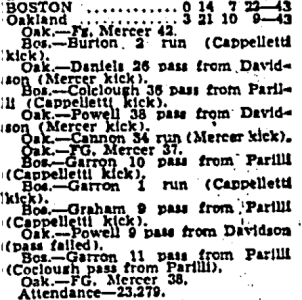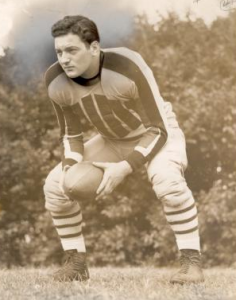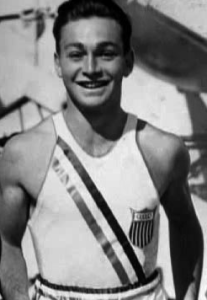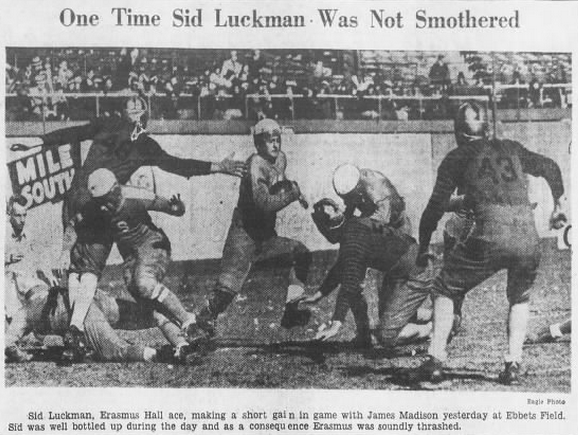You might say the Baltimore Colts had a rough day on Oct. 18, 1953. The Packers pounded them 37-14 in Green Bay, but that was just the beginning. After the Colts’ plane returned home, an Air Force ambulance whisked three injured players — linebacker Bill Pellington, tackle Ernie Blandin and quarterback Dick Flowers — to Union Memorial Hospital. Or rather, it tried to.
The ambulance was racing through the streets of the city “with the siren wide open” just before midnight — according to Dr. Erwin Mayer, the team physician, who was along the ride — when it 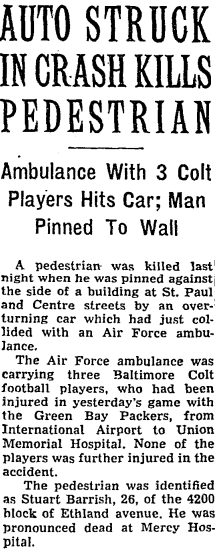 went through a red light and collided with a car at the intersection of St. Paul and Centre streets. The car “spun over several times, hurtling against [a man] who had been standing on the corner,” The Associated Press reported.
went through a red light and collided with a car at the intersection of St. Paul and Centre streets. The car “spun over several times, hurtling against [a man] who had been standing on the corner,” The Associated Press reported.
Unbelievable. The bystander — a 26-year-old Korean War veteran, Stuart Barrish — was “pinned against a building” and killed, the story said. “Nobody else was hurt.” (Actually, that last detail turned out to be inaccurate. It came out later in the Baltimore Sun that Blandin, who already had a fractured nose from the Packers game, “suffered an injury in the collision of the ambulance . . . with another automobile, spraining his arm.”)
The case dragged out in the courts for two months. A grand jury had refused to indict either of the drivers on a manslaughter charge, and the ambulance driver — an Air Force airman — had been acquitted of reckless driving. But the driver of the car had been found guilty of the lesser charge. He appealed his three-month jail sentence and $1,000 fine and, four days before Christmas, a Criminal Court judge overturned it.
“After listening to testimony,” AP reported, Judge James K. Cullen “said the case did not represent the type of emergency covered by law, and that there was ‘no evidence whatsoever’ that the ambulance had given sufficient siren warnings.’”
One last note: Flowers, a rookie from Northwestern, was the most seriously injured of the players, suffering a torn knee ligament in “a rough-and-tumble game which saw several players carried off the field,” the United Press said. In a brief relief appearance, he completed 2 of 4 passes for 18 yards.
It was the only game of his NFL career.

